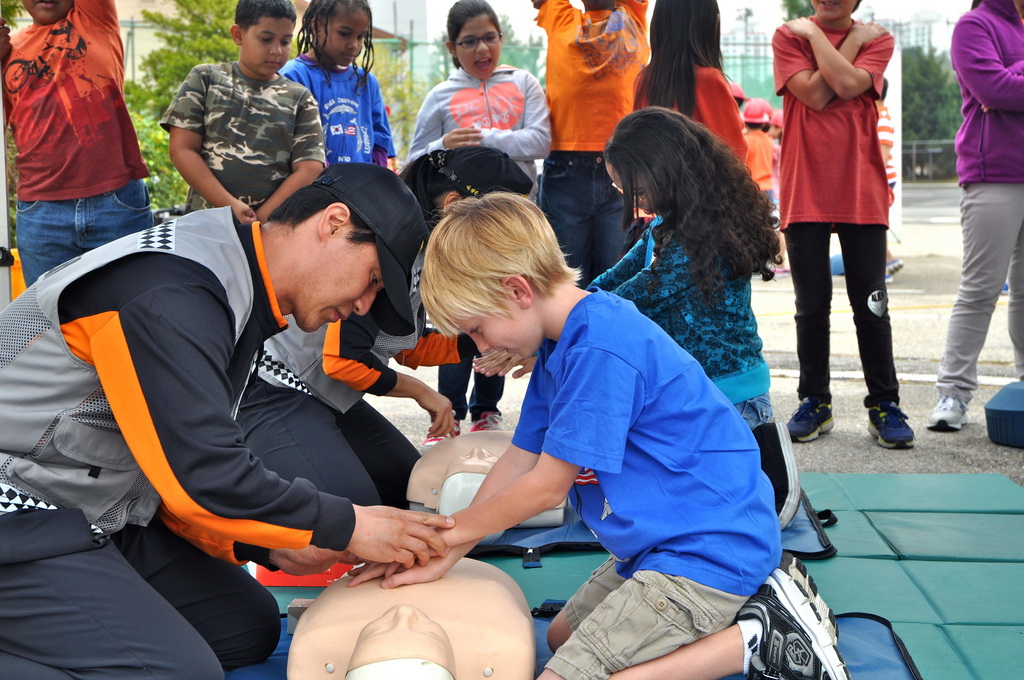Resuscitation through the ages

Every 90 seconds, one person in the United States suffers from a cardiac arrest, and a large majority of those people will be given Cardiopulmonary Resuscitation (CPR) as a first aid method (Cooper et al, 2006). Since modern resuscitation has been around, it has become the only reliable way to keep a patient alive long enough while they await for further treatment.
Despite it’s prevalence around the world, CPR as we know it today has own really been around for about 50 years. However, various forms of resuscitation have been in existence for centuries, with varying success rates.
Here we take a journey back through the ages to see just how far resuscitation has come.
Early Resuscitation
Very early in human history, our ancestors made some observations about the human body in its dying stages. They noticed that the body became cold when it was dying, and so connected heat with life. This observation was the basis for their resuscitation attempts, and they would use hot material laid on the body to try bring it back to life.
This early method is relatively tame compared to what came next over the following centuries.
Flagellation Method – 1500 AD
In one of the more extreme methods of resuscitation, the Flagellation Method was used – this involved whipping the victim to try and shock the body back to life (Gordon S., 1966). In some ways, the methods behind it are not completely dissimilar to the modern day defibrillators, however it rarely worked in resuscitating a patient.
Bellows Method – 1530 AD
In the 1530’s, the Bellows Method came about. At this stage they realised that air needed to reach the lungs, and developed a contraption called the bellows, which was actually used to put out fires in a fireplace. This method was not without its faults, however. Although used for over 300 years as the primary resuscitation method, the key problem it had was that few people would be carrying bellows with them at the right time. Doctors also had a much lesser understanding of the human respiratory system, and didn’t realise that the neck of the patient needed to be held back to open up the airways, minimise the life-saving effects. (Cooper J., 2006)
The bellows method was discontinued in 1829, after Leroy d’Etiolles demonstrated – using an animal – that it could actually cause death by providing too much air to the patient.
The method wasn’t completely lost in history, though – modern day bag-valve masks were based on the Bellows Method theory.
Trotting Horse Method – 1812 AD
One of the more unusual methods was the Trotting Horse Method. In the United States in 1812, lifeguards on beaches were equipped with a horse, which they would place a drowning victim on, and run them up and down the beach. The belief was that the movement would result in alternate compression and relaxation of the chest. It was banned just three years later due to complaints from the public about the cleanliness of the beaches. (Malek J., 2011)
Other methods
Other resuscitation techniques came and went throughout these years, too, including the fumigation method from 1711-1811, which involved blowing tobacco smoke into the victim’s rectum; the inversion method – first used by the Ancient Egyptians, but popularised again in the 1770’s – and had the victim hanging upside down.
Modern Resuscitation
Modern resuscitation, known as mouth-to-mouth resuscitation, was first proven to be an effective method of life saving in 1956, by James Elam and Peter Safar. Just a year later, the U.S. military adopted this method as it’s primary resuscitation technique.
In 1960, cardiopulmonary resuscitation (CPR) was invented, and the American Heart Foundation were at the forefront of the the new method – training healthcare professionals and the general public across the USA. CPR went global and it is still the primary first aid method for resuscitation.
CPR is a life-saving combination of mouth-to-mouth resuscitation and chest compressions. As well as getting much-needed oxygen into the lungs, it also triggers artificial blood circulation. (Better Health, 2014)
Different countries and health organisations often recommend slightly varied methods of performing CPR – or more importantly, ways to remember CPR. In Australia, the New South Wales Ambulance Service recommends the acronym ‘DRS ABCD‘ : Danger, Response, Send for Help, Airway, Breathing, CPR, Defibrillation – as a way of remembering the CPR steps. Most other guidance is a variation on these key steps.
Despite modern day resuscitation largely staying the same for the last half century, it is constantly being reviewed and tweaked. For example, health organisations are currently promoting hands-only CPR methods as opposed to a combination with mouth-to-mouth resuscitation. In 2008, the American Heart Foundation released guidelines on hands-only CPR, which advises the use of hard and fast chest compressions on a person who has gone into cardiac arrest.
One of the most recent developments in hands-only CPR came off the back of a study from the University of Illinois College of Medicine that found that hands-only CPR is most effective when done to the beat of the Bee Gee’s aptly-named classic, ‘Stayin’ Alive’. The British Heart Foundation hired Vinnie Jones to front their effective television campaign to promote the method.
https://www.youtube.com/watch?v=JR0aZX1_TD8
Edberg M (2014-01-26 00:15:27). Resuscitation through the ages. Australian Science. Retrieved: Sep 16, 2025, from https://ozscience.com/research-grants-and-programs/medical-and-health-sciences-research-grants-and-programs/resuscitation-through-the-ages/
 Follow
Follow